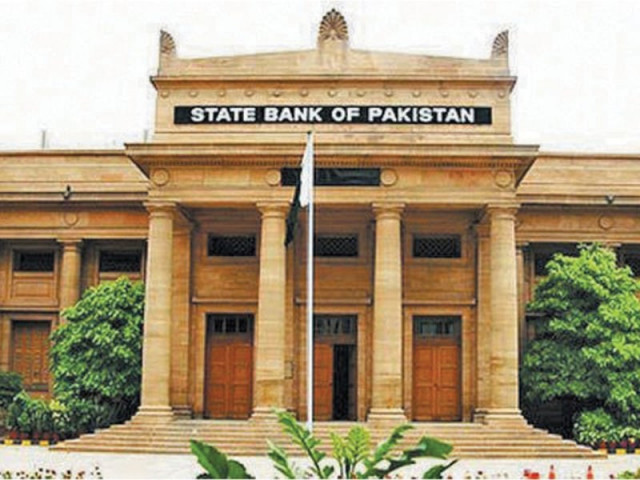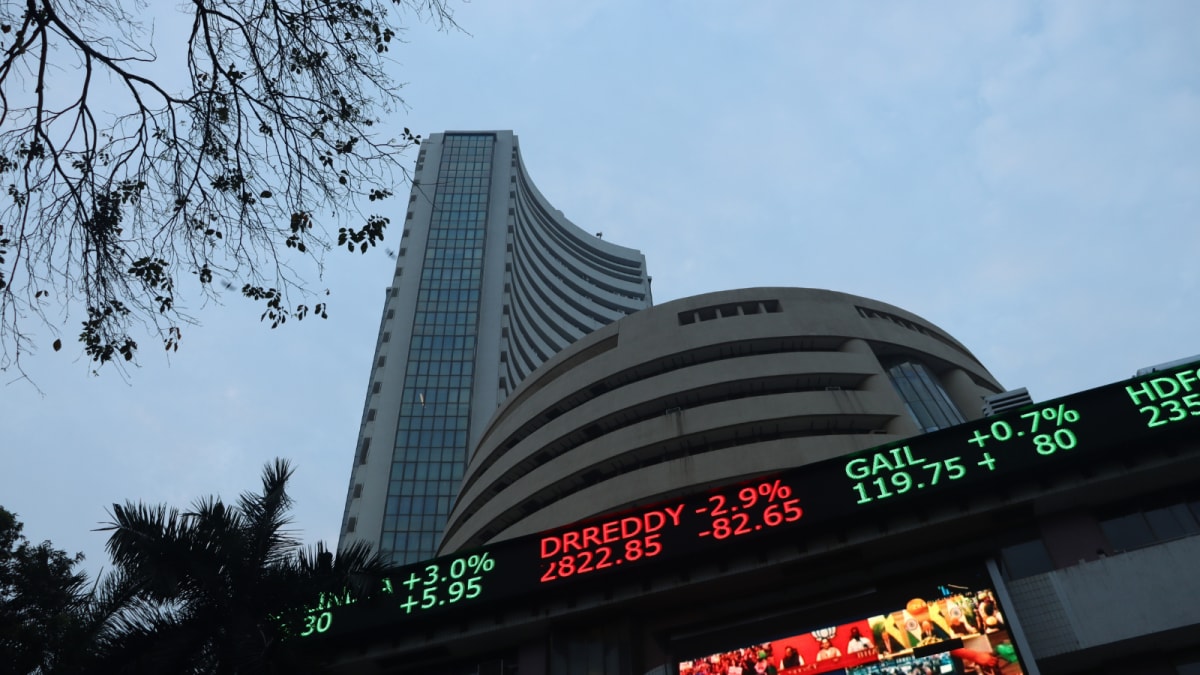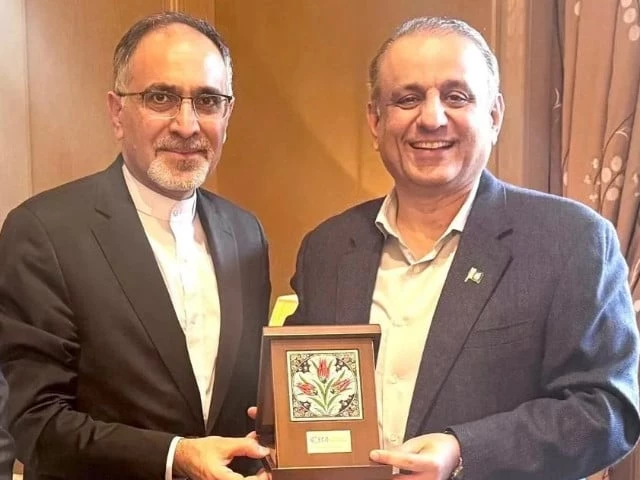Business
SBP buys $7.8 billion over 12 months | The Express Tribune

KARACHI:
The State Bank of Pakistan (SBP) carried out net foreign exchange interventions amounting to $7.8 billion between June 2024 and May 2025.
“The central bank purchased $522 million worth of foreign currency (US dollar) from the inter-bank forex market in May 2025,” noted Topline Securities. This brings last 12 months (June 2024 to May 2025) intervention to $7.76 billion.
These interventions led to an overall increase of $2.1 billion in the country’s foreign exchange reserves between June 2024 and May 2025, while the remaining amount was largely utilised for debt repayments, according to data compiled by Arif Habib Limited (AHL).
With May’s interventions of $522 million, the central bank’s reserves rose $1.24 billion to $11.52 billion. “The remaining amount was allocated to managing debt repayments,” noted AHL.
Moreover, the Pakistani rupee inched higher against the US dollar on Monday, appreciating 0.01% in the inter-bank market. At the close of trading, the local currency settled at 281.87, marking a gain of three paisa and extending its winning run to 12 consecutive sessions.
“However, the currency has depreciated 1.18% in the calendar year to date while posting an appreciation of 0.67% on a fiscal year-to-date basis,” said Ismail Iqbal Securities.
Last week, the rupee had posted another positive performance, rising 16 paisa to close at 281.90 compared to 282.06 a week earlier, according to figures released by the State Bank of Pakistan (SBP).
Meanwhile, gold prices in Pakistan remained stable, in contrast to the international market, where bullion fell as investors booked profits and a stronger US dollar weighed on sentiment.
Global focus has now shifted to the upcoming US Personal Consumption Expenditures (PCE) data for signals on the Federal Reserve’s policy outlook.
According to the All Pakistan Sarafa Gems and Jewellers Association, the local price of gold per tola stood unchanged at Rs359,800, while the rate for 10 grams also remained firm at Rs308,470. The precious metal had surged by Rs4,100 per tola on Saturday, touching Rs359,800.
Commenting on the trend, Interactive Commodities Director Adnan Agar said the market was unusually subdued. The low was at $3,359 and the high stood at $3,375.
“Today, the market is very cold and very quiet,” he noted. There was no such activity, although from Friday till now, the market had been up and was not down, he added.
Agar highlighted that only geopolitical developments such as the Ukraine-Russia conflict or fresh cues from the US Fed on rate movements could trigger movement in gold prices in the coming days.
Spot gold inched down 0.1% at $3,370.14 per ounce as of 0957 am ET (1357 GMT), after hitting its highest level since August 11 on Friday, according to Reuters. US gold futures for December delivery also fell 0.1% to $3,414.90.
The dollar nudged 0.2% higher against rival fiat currencies, making bullion priced in the dollar more expensive for foreign buyers.
Business
Gross GST collections for November stand at over Rs 1.70 lakh crore; up 0.7 per cent – The Times of India

GST collections: The Gross Goods and Services Tax (GST) collections for the month of November came in at over Rs 1.70 lakh crore. This is a rise of 0.7%, according to official data.SBI Research in a report in November had estimated that the gross domestic GST collections may come around Rs 1.49 lakh crore for November 25 (returns of October 25 but filed in Nov’25), a YoY growth of 6.8%.“Coupled with Rs 51,000 crore of IGST and cess on Import, the November GST collections thus could cross Rs 2.0 lakh crore, driven by the peak festive season demand led by lower GST rate and increased compliance while most of states experience positive gains,” SBI Research had said.This story is being updated
Business
Key Financial Deadlines That Have Been Extended For December 2025; Know The Last Date

New Delhi: Several crucial deadlines have been extended in December 2025, including ITR for tax audit cases, ITR filing and PAN and Aadhaar linking. These deadlines will be crucial in ensuring that your financial affairs operate smoothly in the months ahead.
Here is a quick rundown of the important deadlines for December to help you stay compliant and avoid last-minute hassles.
ITR deadline for tax audit cases
The Central Board of Direct Taxes has extended the due date of furnishing of return of income under sub-Section (1) of Section 139 of the Act for the Assessment Year 2025-26 which is October 31, 2025 in the case of assessees referred in clause (a) of Explanation 2 to sub-Section (1) of Section 139 of the Act, to December 10, 2025.
Belated ITR filing deadline
A belated ITR filing happens when an ITR is submitted after the original due date which is permitted by Section 139(4) of the Income Tax Act. Filing a belated return helps you meet your tax obligations, but it involves penalties. You can only file a belated return for FY 2024–25 until December 31, 2025. However, there will be a late fee and interest charged.
PAN and Aadhaar linking deadline
The Income Tax Department has extended the deadline to link their PAN with Aadhaar card to December 31, 2025 for anyone who acquired their PAN using an Aadhaar enrolment ID before October 1, 2024. If you miss this deadline your PAN will become inoperative which will have an impact on your banking transactions, income tax return filing and other financial investments.
Business
Stock Market Live Updates: Sensex, Nifty Hit Record Highs; Bank Nifty Climbs 60,000 For The First Time

Stock Market News Live Updates: Indian equity benchmarks opened with a strong gap-up on Monday, December 1, touching fresh record highs, buoyed by a sharp acceleration in Q2FY26 GDP growth to a six-quarter peak of 8.2%. Positive cues from Asian markets further lifted investor sentiment.
The BSE Sensex was trading at 85,994, up 288 points or 0.34%, after touching an all-time high of 86,159 in early deals. The Nifty 50 stood at 26,290, higher by 87 points or 0.33%, after scaling a record intraday high of 26,325.8.
Broader markets also saw gains, with the Midcap index rising 0.27% and the Smallcap index advancing 0.52%.
On the sectoral front, the Nifty Bank hit a historic milestone by crossing the 60,000 mark for the first time, gaining 0.4% to touch a fresh peak of 60,114.05.
Meanwhile, the Metal and PSU Bank indices climbed 0.8% each in early trade.
Global cues
Asia-Pacific markets were mostly lower on Monday as traders assessed fresh Chinese manufacturing data and increasingly priced in the likelihood of a US Federal Reserve rate cut later this month.
According to the CME FedWatch Tool, markets are now assigning an 87.4 per cent probability to a rate cut at the Fed’s December 10 meeting.
China’s factory activity unexpectedly slipped back into contraction in November, with the RatingDog China General Manufacturing PMI by S&P Global easing to 49.9, below expectations of 50.5, as weak domestic demand persisted.
Japan’s Nikkei 225 slipped 1.6 per cent, while the broader Topix declined 0.86 per cent. In South Korea, the Kospi dropped 0.30 per cent and Australia’s S&P/ASX 200 was down 0.31 per cent.
US stock futures were steady in early Asian trade after a positive week on Wall Street. On Friday, in a shortened post-Thanksgiving session, the Nasdaq Composite climbed 0.65 per cent to 23,365.69, its fifth consecutive day of gains.
The S&P 500 rose 0.54 per cent to 6,849.09, while the Dow Jones Industrial Average added 289.30 points, or 0.61 per cent, to close at 47,716.42.
-

 Sports1 week ago
Sports1 week agoWATCH: Ronaldo scores spectacular bicycle kick
-

 Entertainment1 week ago
Entertainment1 week agoWelcome to Derry’ episode 5 delivers shocking twist
-

 Politics1 week ago
Politics1 week agoWashington and Kyiv Stress Any Peace Deal Must Fully Respect Ukraine’s Sovereignty
-

 Business1 week ago
Business1 week agoKey economic data and trends that will shape Rachel Reeves’ Budget
-

 Tech6 days ago
Tech6 days agoWake Up—the Best Black Friday Mattress Sales Are Here
-

 Politics1 week ago
Politics1 week ago53,000 Sikhs vote in Ottawa Khalistan Referendum amid Carney-Modi trade talks scrutiny
-

 Fashion1 week ago
Fashion1 week agoCanada’s Lululemon unveils team Canada kit for Milano Cortina 2026
-

 Tech6 days ago
Tech6 days agoThe Alienware Aurora Gaming Desktop Punches Above Its Weight


1729471601-0/image-(8)1729471601-0-640x480.webp)








